It’s safe to say the Android tablet experience has never been better, with manufacturers like Samsung leading the way with high-end slates. Plus, there’s an ever-increasing developer focus on optimizing apps for tablets‘ hardware and form factors. In fact, until recent years, finding a truly satisfying non-smartphone Android device — without breaking the bank — proved downright difficult. Thankfully, we’re now seeing an arms race of midrange tablets great at introducing new users to the Android tablet space.
Of course, there are still plenty of duds, and some affordable models from just a couple of years ago are borderline obsolete already. Luckily, the list of worthwhile, affordable options is only increasing and includes some usual suspects as well as some newcomers that tech fans stateside don’t hear much hype about. We’ve tested a great deal of these hands-on with real-world workloads and are happy to share that reports of the cheap Android tablet’s death are, in fact, greatly exaggerated.
Our favorite budget Android tablets right now
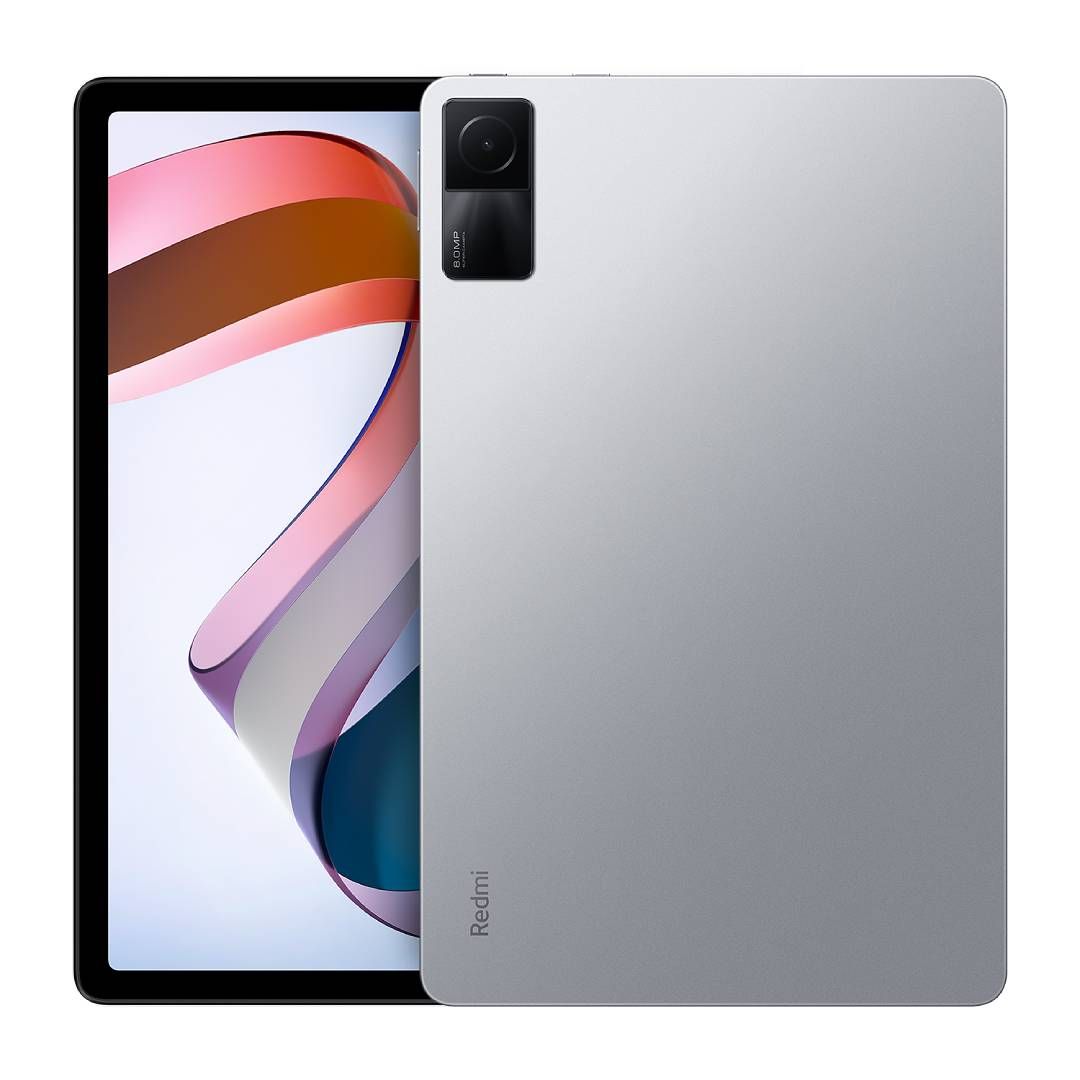
Xiaomi Redmi Pad SE
Best overall
Seriously impressive specs for the price
Despite its limited US launch, the Xiaomi Redmi Pad SE packs an incredible hardware punch at a price right around $200. Driven by a reasonably capable SoC and an optional 8GB of RAM, it performs better than its closer competitors and sports a smooth, good-looking display.
- Up to 8GB of RAM
- High peak brightness and contrast
- Has a headphone jack
- Subpar eMMC internal storage
- Slow 10-watt charging
Xiaomi boasts a massive presence in what is by far the largest smartphone market in the world: China. It doesn’t officially release phones in the United States, although you can get your hands on some great ones like the Xiaomi 13 Pro. The company’s tablets face a similar situation, with an extremely limited North American launch — in fact, you can only get them by importing one, or via a third-party seller through a company such as Amazon. While you may not have heard of it, the Xiaomi Redmi Pad SE is the best Android tablet on the market south of $250.
It offers up to 256GB of storage and 8GB of RAM, and interestingly, the 128GB/8GB version is frequently priced exactly the same as the 128GB/4GB model. The Snapdragon 680 SoC inside isn’t exactly a barn-burner, but we’re talking about low-cost slates here, not high-powered gaming tablets. In the display department, its 11-inch, 1200 × 1920 display refreshes at up to 90 hertz and can produce up to 400 nits of brightness. Again, it is not high-end, but remarkable for the cost.
Android 13 provides the basis for its MiUI operating system, and Xiaomi promises two years of full OS updates with an additional year of security patches. The hardware inside, as well as the display technology used, will easily survive and remain capable throughout that lifespan. Its aluminum body measures less than 8 millimeters thick and weighs fewer than 500 grams, making this as portable as an 11-inch tablet gets. While it won’t win any benchmark battles, few budget-friendly options come close to its firepower.
It’s not perfect, of course. The Snapdragon 680 chipset does underperform compared to those found in tablets of $300 or more, and the 10-watt charging speed is borderline embarrassing. But for pure bang for the buck, it’s hard to beat.
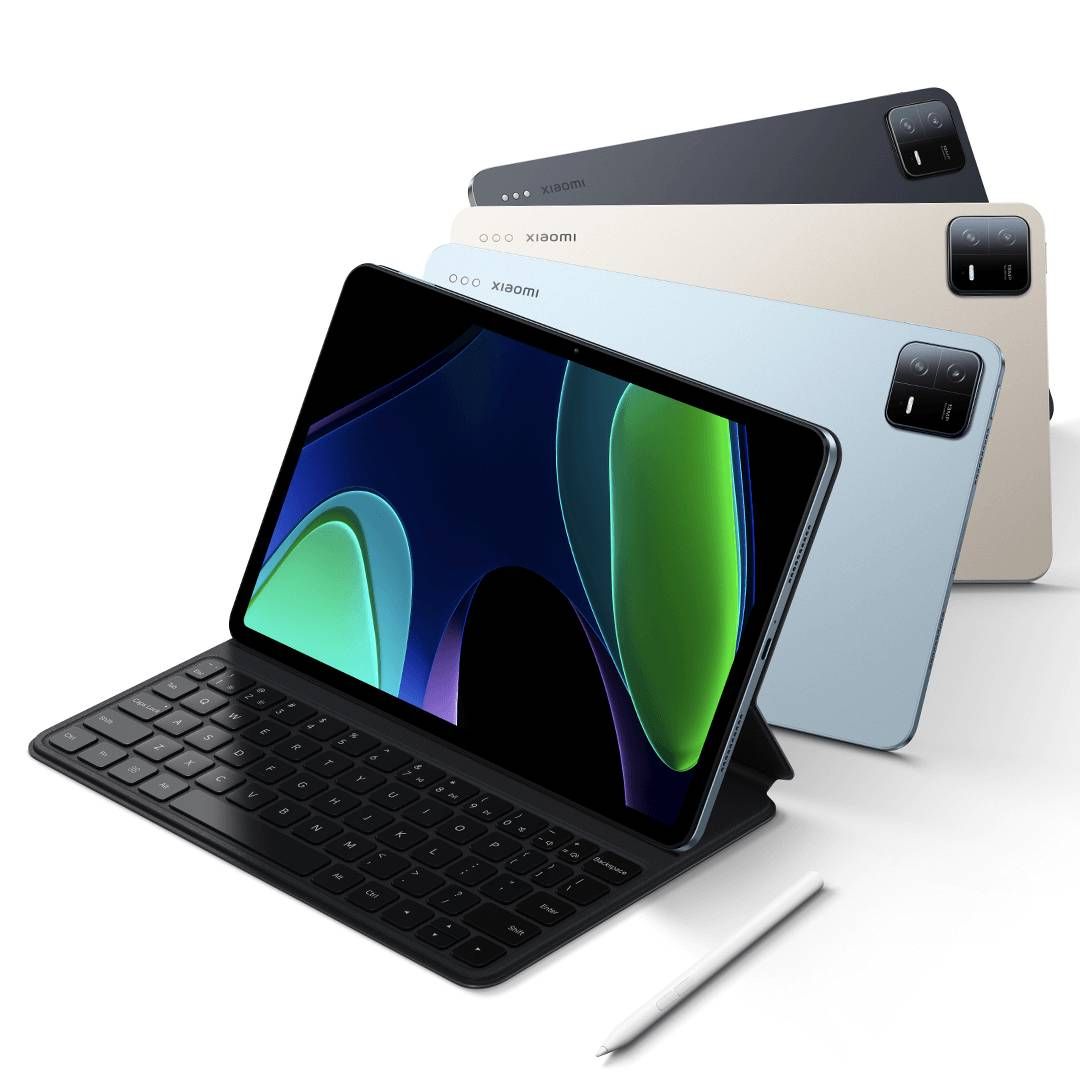
Xiaomi Pad 6
Premium pick
A high-end option for a midrange price
The Xiaomi Pad 6 boasts more powerful hardware than a $350 tablet has any right to. Its bright, high-resolution display supports Dolby Vision, its Snapdragon 870 chipset won’t disappoint, and its high-speed internal storage means it’ll perform like a high-end tablet for years to come.
- Up to 256GB of UFS 3.1 storage
- 144Hz display with a wide color gamut
- A mere 6.5 millimeters thick
- Not available with cellular connectivity
- No microSD slot or headphone jack
If you’re willing to part with a little more cash, you can’t do better than the Xiaomi Pad 6, the significantly updated successor to the Xiaomi Pad 5. Inside and out, this razor-thin tablet performs great, thanks to a Snapdragon 870 SoC and 1800 × 2880 display capable of effective HDR output and a refresh rate of up to 144 hertz. We’re also pleased to report that its internal memory uses UFS 3.1 technology, which is leaps and bounds ahead of the eMMC flash memory embedded in Xiaomi’s less expensive Redmi Pad SE.
Most of the Xiaomi Pad 6’s specs actually scream high-end. Its four Dolby Atmos-certified speakers sound excellent, it runs games at reasonably high frame rates, the 6.5-millimeter thickness is as sleek as it gets, and the display beats everything else in this price category. There are even mated keyboard covers and styluses available to fully flesh out the tablet experience. Unfortunately, we did notice the glaring lack of a microSD card slot and 3.5-millimeter audio jack, and come to think of it, that’s in line with other high-end tablets, too.
Curiously, you can sometimes find the 128GB/8GB version at a lower cost than the 128GB/4GB one. Naturally, we recommend going for that one. And while ~$350 is a significant step more costly than most other cheap Android tablets, this one might leave you wondering why anybody would spend any more on a fancy Tab S Series.
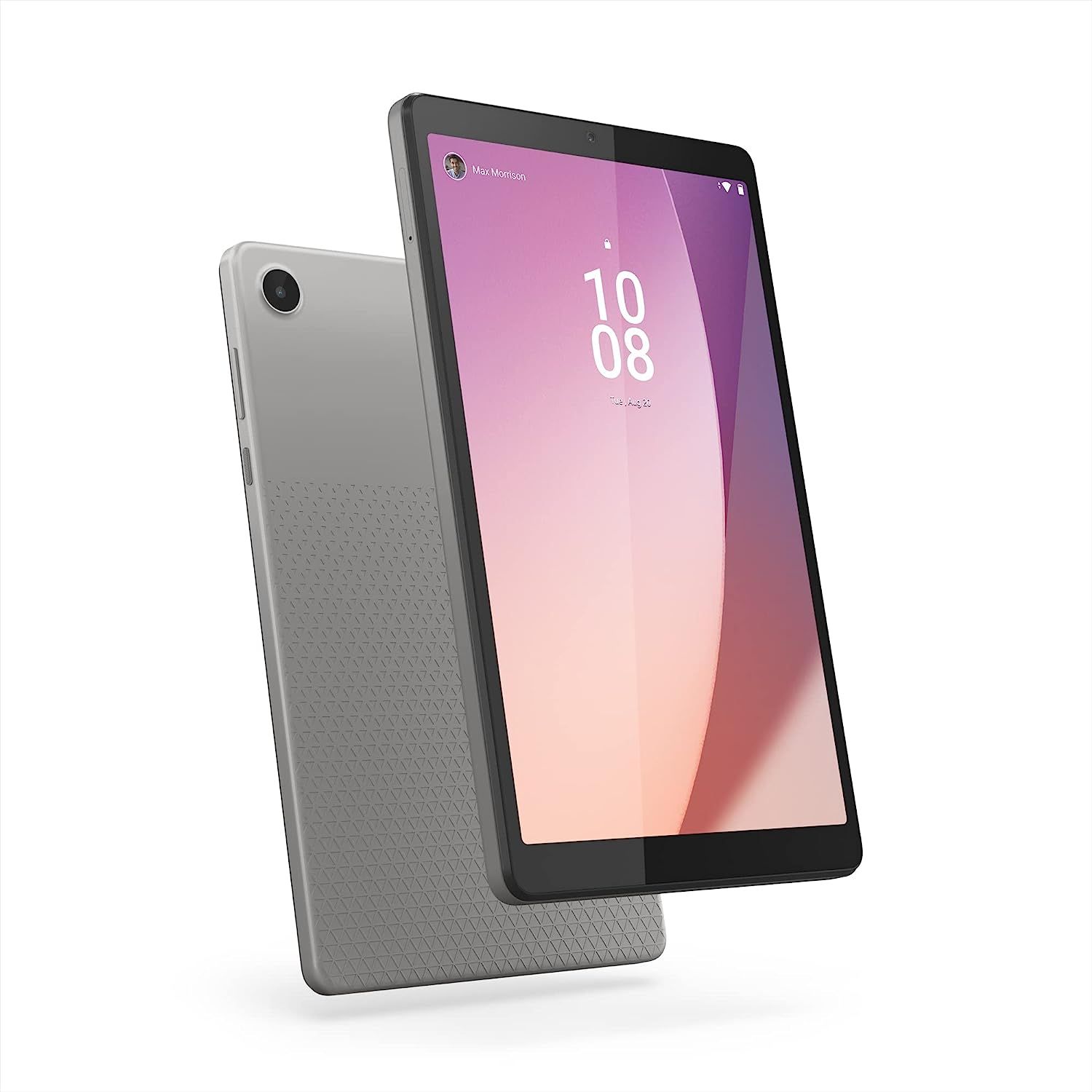
Lenovo Tab M8 (4th Gen)
Best value
For basic entertainment and social media needs
$75 $90 Save $15
They don’t get much simpler than the fourth-generation Lenovo Tab M8. It’s one of the smallest modern tablets, and good for general use like browsing social media and watching videos despite its somewhat mediocre hardware. While it makes some big sacrifices, it’s just about the cheapest Android tablet worth buying today.
- Incredible battery life
- Compact and durable
- Perfect for casual use
- Not very powerful
- Screen’s a little dim
- No Widevine L1 support for HD streaming
Lenovo’s 8-inch tablet isn’t exactly equipped with powerful hardware, nor does it need to be. Nobody expects a sub-$100 tablet to be a gaming or multitasking powerhouse, and the latest Tab M8 runs basic apps fine, despite not being very powerful. Since it’s so small, it’s relatively meager battery actually lasts for quite a while, and it’s awfully durable, to boot. It’s capable enough that we consider it a better value than its only major competitor, the Amazon Fire 7, because its close-to-stock Android implementation doesn’t hold it back like Amazon’s FireOS can.
Its middling performance and brightness won’t be dealbreakers for most people shopping in this price range, but there is one drawback that some users need to know. Sadly, it only sports Widevine L3 certification, as opposed to the Widevine L1 status that major streaming services like Amazon require for HD playback, meaning videos may be a little less crisp than usual. But if you plan to use an existing media collection instead of streaming it from the web, that won’t make any difference. What might make a difference is the extra cash left over in your pocket, for buying a microSD card to store your various movies and TV shows for instant, lag-free, offline playback.
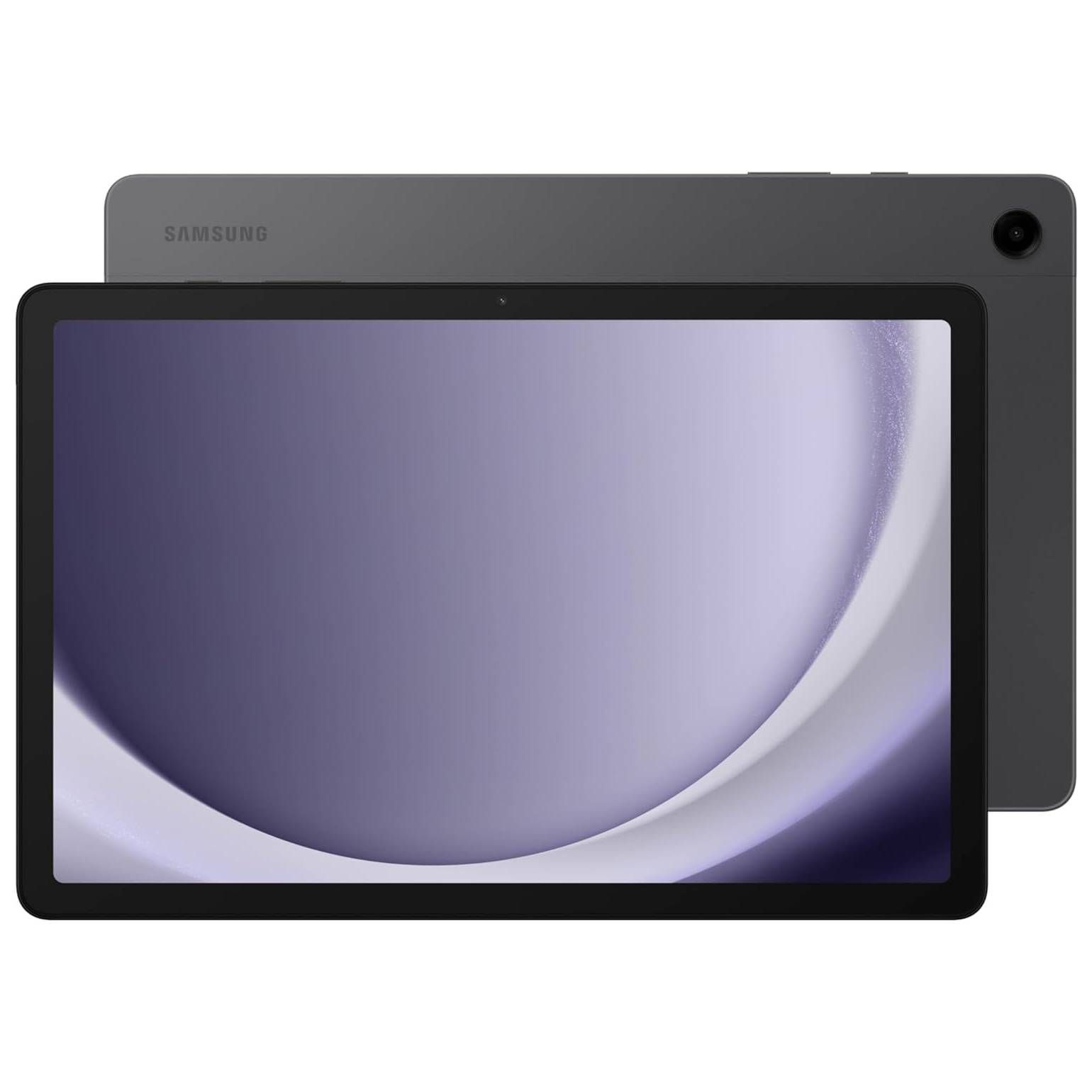
Samsung Galaxy Tab A9+
Unrivaled software
Samsung releases yet another winner
The Galaxy Tab S Series gets most of the attention, but the Tab A9+ solidifies the company’s place in the budget-friendly tablet space. Not only does it perform admirably for something so cheap, it delivers the much-talked-about Android experience no other tablet manufacturer can mimic.
- Doesn’t feel cheap
- Great performance and speakers
- 5G model available
- No IP rating or S Pen support
- Battery life could be better
Months after its release in other markets worldwide, the Galaxy Tab A9+ finally hit US shelves in January 2024. Obviously a far cry from the company’s world-beating S-series tablets, it does still provide a characteristic Samsung experience, including a better-than-expected fit and finish, pretty good performance, and a streamlined, user-friendly software setup. Priced just over $200, it’s an excellent deal that, unsurprisingly, marks one of today’s best entry-level tablets.
We’re still cooking up an in-depth review, but early indications are that it’s a major upgrade from the Tab A8, Samsung’s most recent budget-friendly offering. The Snapdragon 695 SoC inside isn’t any kind of barn-burner, but works great even for a lot of games. We recommend considering the 8GB/128GB model if you want it to remain useful for as long as possible.
The Tab A9+ actually came very close to dethroning the Redmi Pad SE for the Best Overall pick. In the end, the A9+’s screen isn’t as bright or colorful, and the shorter battery life holds back Samsung’s latest cheap slate a little. But if you know and love Samsung’s software experience, you’ll probably be able to deal with those minor drawbacks, and should consider buying the Galaxy Tab A9+.
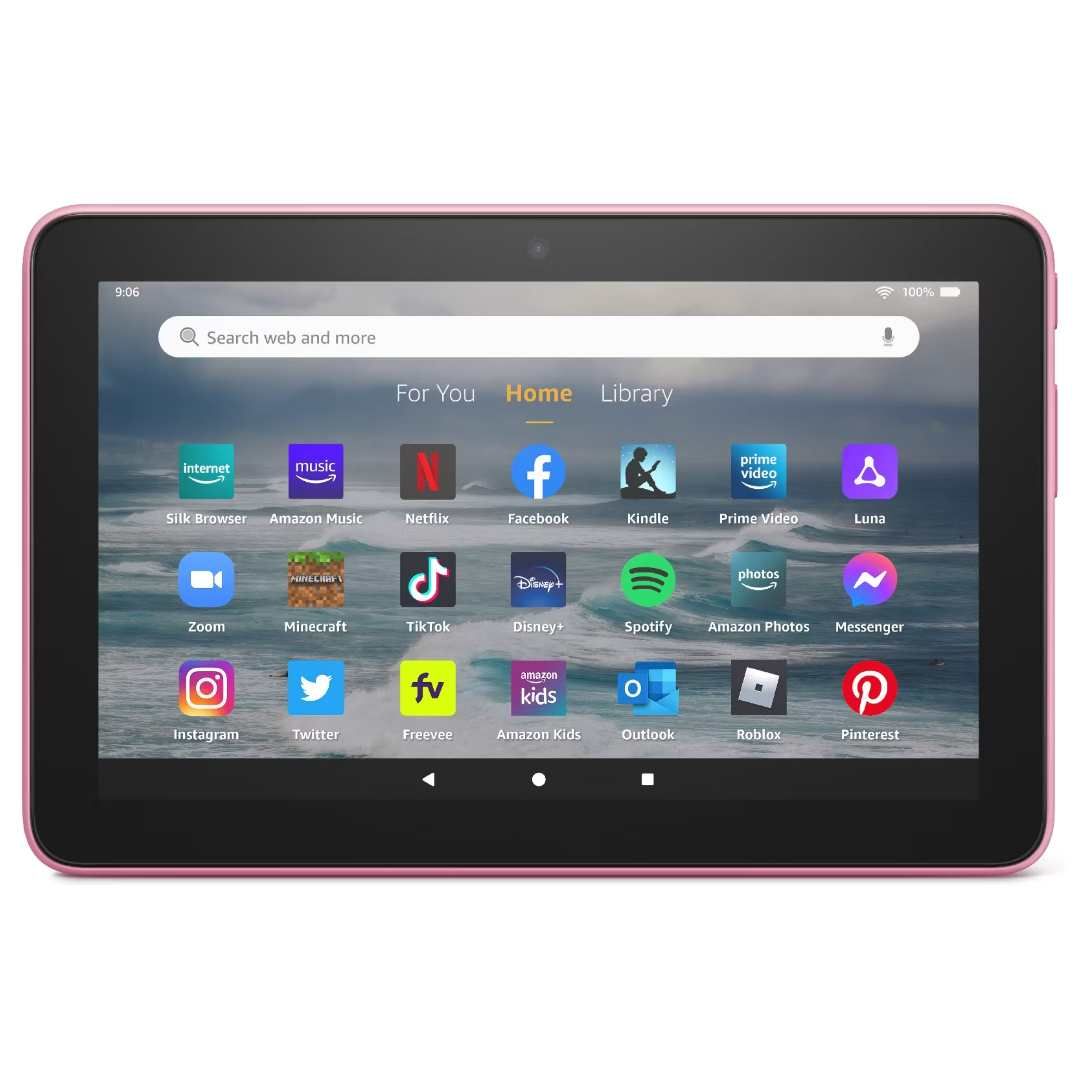
Amazon Fire 7 (2022)
Most compact
For basic entertainment and social media needs
The most basic of basic tablets, the 2022 Amazon Fire 7 is what you get when you need a screen that works, a battery that lasts, and a device that doesn’t cost much and can withstand a few bumps and bruises. It’s cheap, and it works, but it’s not for everyone.
- Incredibly small
- As cheap as a tablet gets
- Plays video and low-intensity games
- Extremely limited app selection
- Locked-down operating system
- Generally mediocre performance
The Amazon Fire 7 isn’t particularly impressive, nor is it extremely versatile. But it’s definitely reliable and can stream video or play back a recorded collection. It won’t win any head-to-head performance or display battles, but its compact size, diminutive price, and inclusion of a headphone jack and microSD card slot make it effective for portable media consumption and basic web browsing. And, partly because it’s so small, you won’t have to worry much about damage from casual use. This makes it a fantastic choice for keeping kids occupied in the back seat during long trips.
Also, keep in mind that while its Fire OS technically runs on Android, it’s the most locked-down implementation on the market. That’s not necessarily a deal-breaker since it includes popular games like Minecraft and Roblox. There’s also the ever-expanding host of original Amazon content, plus the (actually quite decent) selection offered by Amazon Music.
All told, the Amazon Fire 7 is meant for entertainment on the go and not a lot else. So, while it’s not the most functional, it very much lives up to its paltry $60 price tag if all you’re looking for is an internet-connected display with access to basic streaming, browsing, and social media apps.
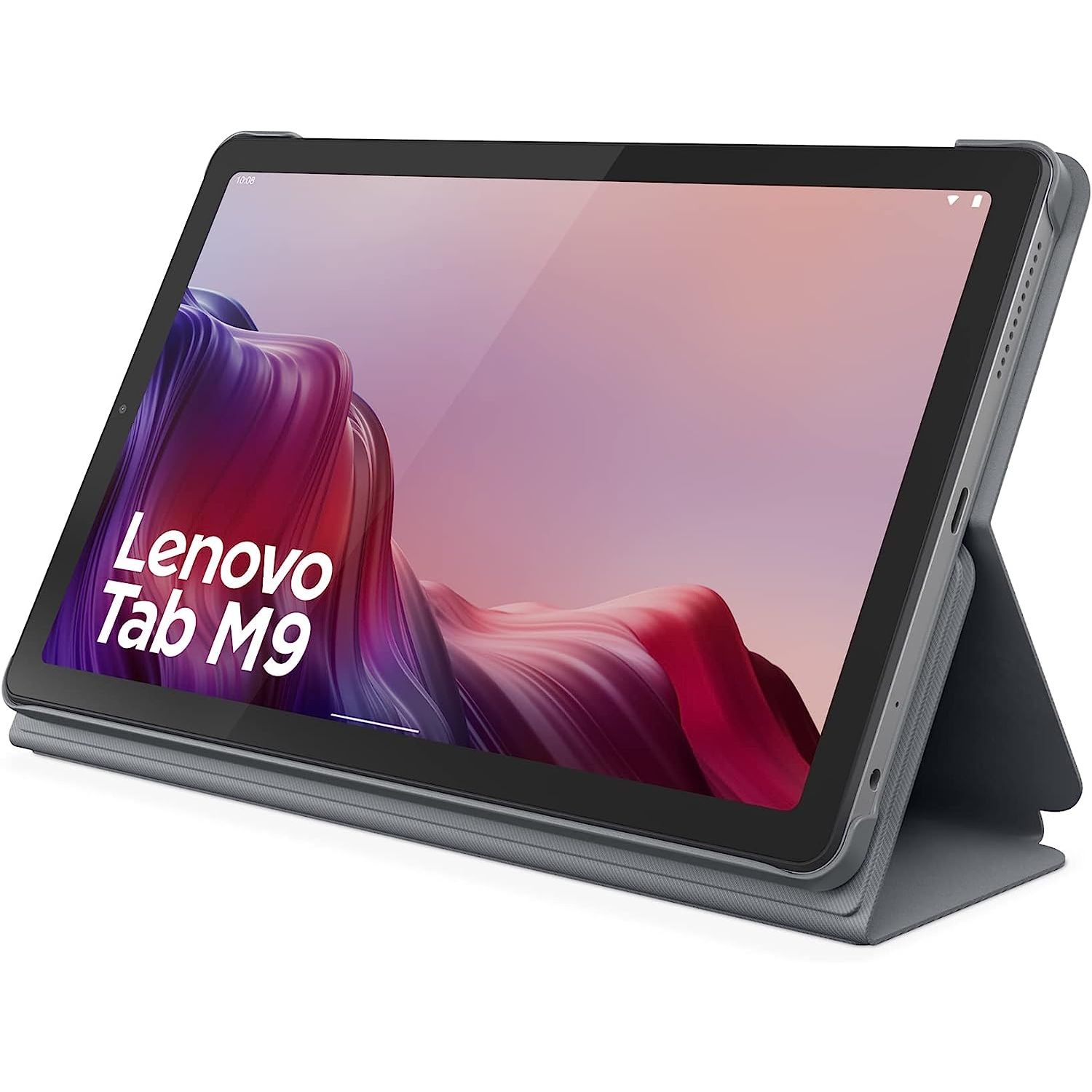
Lenovo Tab M9
Especially portable
A fine balance of portability, price, and performance
$95 $150 Save $55
It’s not actually Lenovo’s smallest tablet — that honor goes to the Tab M8 — but the Lenovo Tab M9 delivers possibly the best ultra-compact Android experience of anything on the market. It’s even a little more capable and convenient than you’d hope for a $150 device.
- Nearly as small and light as they come
- Just-right MediaTek Helio G80 SoC
- Offers the real Android experience
- Not a lot of screen space
- Complex apps can be sluggish
In contrast to certain other small-form-factor tablets, Lenovo’s Tab M9 gives you the freedoms you’d expect from a faithfully implemented Android interpretation. No, it won’t run 3D games at high frame rates, and you won’t find much use in terms of productivity, but you don’t want to try to work on a 9-inch tablet, anyway.
Instead, the M9 uses well-balanced hardware, including 4GB of LPDDR4X RAM, up to 64GB of storage, and a Helio G80 SoC, to provide a user-friendly and relatively versatile tablet experience. Again, this is a 9-inch tablet for a bit over $100, so temper your expectations a little — but the reality is you won’t find a better low-cost option for using one-handed on the go and sliding easily into a purse, briefcase, or backpack without worrying about size, weight, or cost. If you’re looking for the best ultraportable tablet running true Android, look no further.
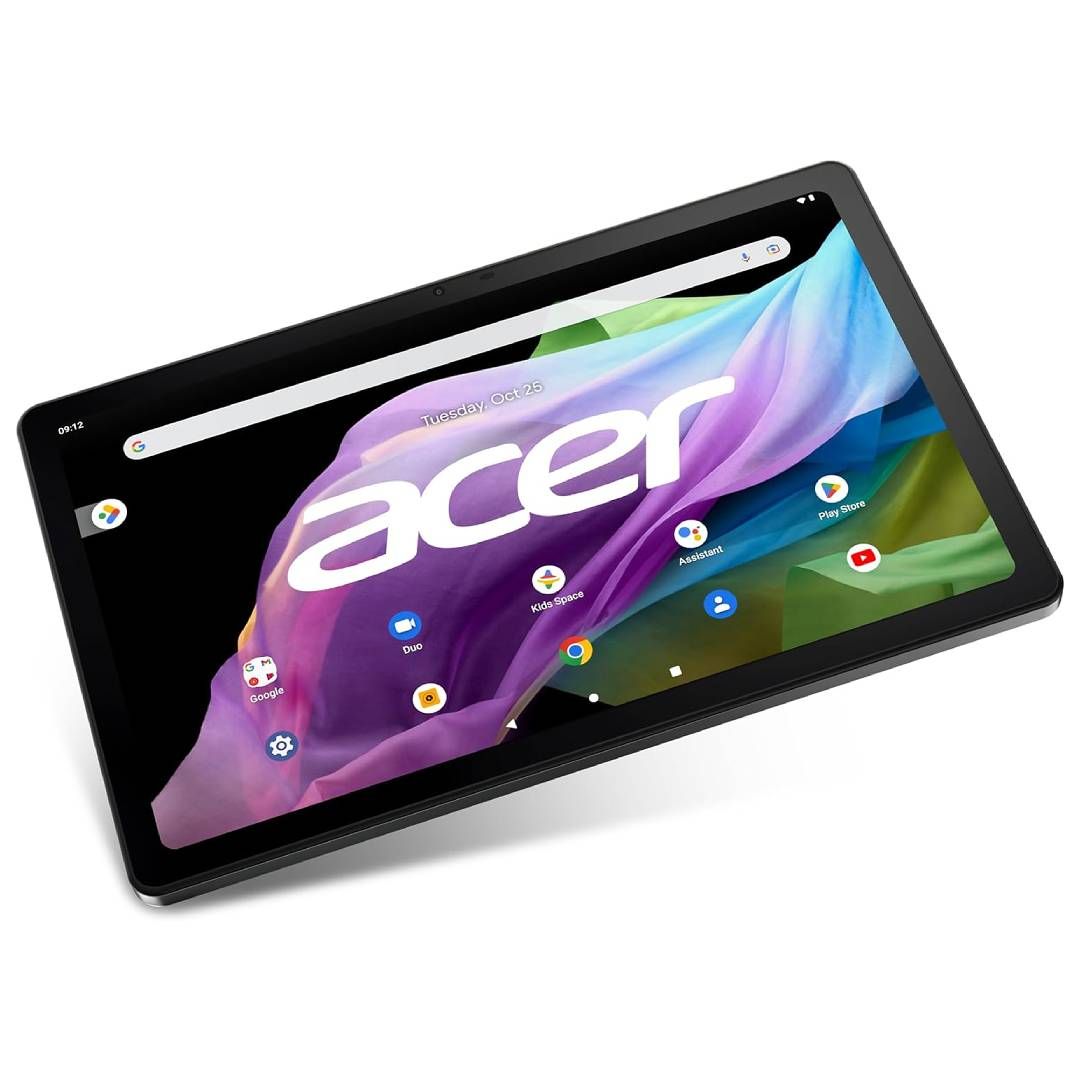
Acer Iconia M10
Great Fire HD alternative
Not much to it, but it doesn’t cost much
$143 $150 Save $7
Ever since netbooks were still a thing, Acer’s made a name for itself with entry-level devices just functional enough to merit their low cost. The base model Iconia Tab M10 fits that bill perfectly, serving up 10 inches of media consumption convenience at only $150 MSRP.
- Surprisingly good performance for the price
- MicroSD slot and headphone jack
- Great for occupying kids or your commute
- Subpar battery life
- Predictably middling performance
The Acer Iconica M10 is exactly what it looks like. Like a lot of Acer’s most successful releases, it skirts the edges of passable performance, but it and its low price certainly don’t promise the world. You’re not looking at any kind of powerhouse in the Cortex A73 SoC, but video streaming, basic browsing, and social media interaction work perfectly well. For that matter, its FHD+ resolution is actually pretty crisp, considering it measures just 10 inches diagonally — although the notably wide bezel is a little disappointing.
At the end of the day, this strikingly baseline device competes directly with the cheapest of the cheap (i.e., the Amazon Fire HD 10), but uses a real version of Android compared to Amazon’s heavily restricted skin. If you’re looking for something to occupy your time on public transit or keep the kids from bugging you on car rides, the Iconia M10 is a worthwhile choice. And if you’re diligent, you can sometimes find upgrades to the more powerful M10 SKU, or even its significantly better P10 sibling, at discounts equal to or more favorable than its $150 price tag.
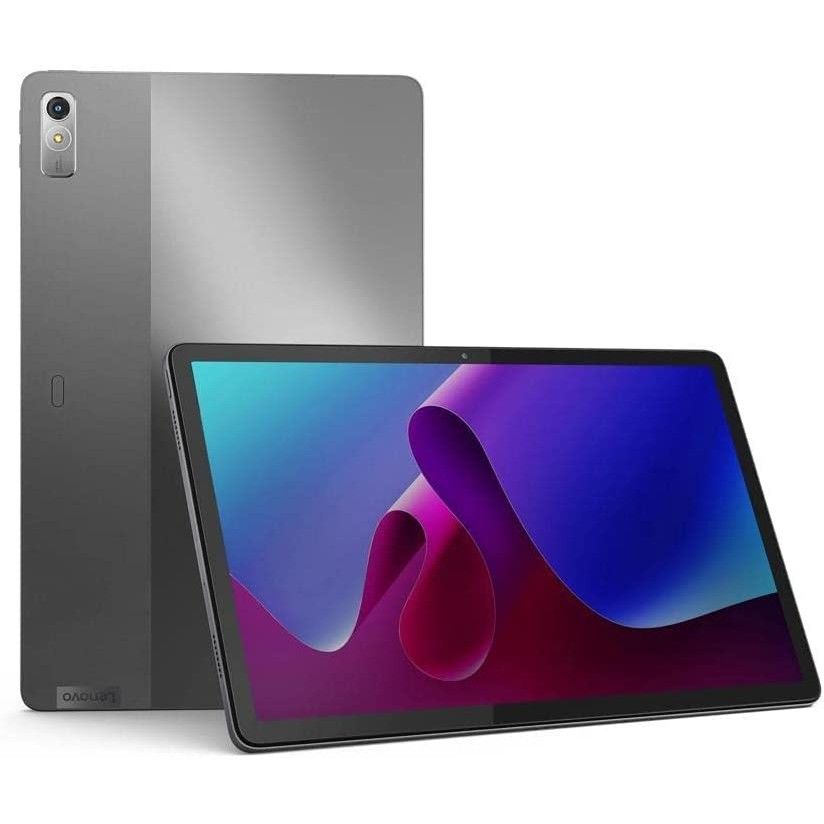
Lenovo Tab P11 Pro Gen 2
Best video playback
A premium display that’s hard to argue with
$276 $430 Save $154
While it barely fits into the budget-friendly category, the Lenovo Tab P11 Pro Gen 2 is worth mentioning due to its best-in-class OLED display, impressive color coverage, and HDR10+ support. And the performance isn’t anything to sneeze at, either.
- Refresh rate up to 120 hertz
- Great Dolby Atmos-enabled speakers
- Optional mated keyboard and stylus
- Relatively costly
- Subpar front camera
The star of the show here is the Tab P11 Pro’s bold OLED screen, a serious rarity for machines in its price range. Its wide DCI-P3 color coverage, practically infinite contrast ratio, above-average brightness, and impeccable motion handling make it the best midrange option for getting the most out of your favorite video content. Bluetooth 5.1, Wi-Fi 6, and a microSD card slot round out this useful media-viewing package, which also supports Lenovo’s high-quality precision Pen 3 and a ThinkPad-inspired keyboard that feels better to type on than most tablet keyboards.
The only significant drawback to the P11 Pro 2 is the cost. Its $430 list price hardly qualifies as cheap. But that’s not unexpected when display quality rivals that of vaunted tablets like the iPad. And at least you won’t have to make any decisions when purchasing, as there’s only a single SKU to choose from, with 128GB of storage and 6GB of RAM.
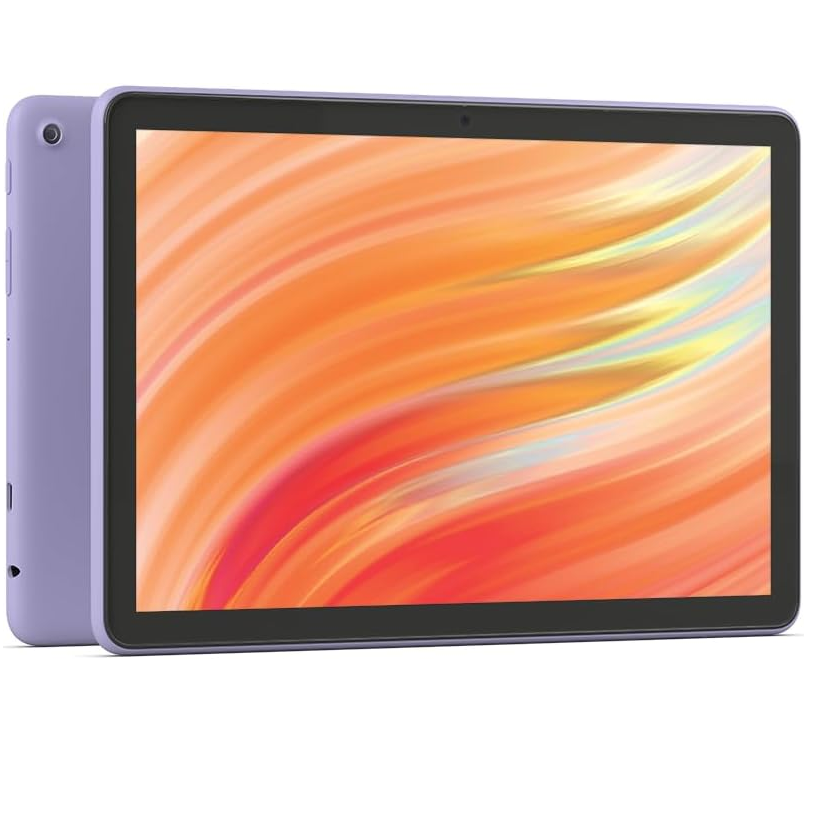
Amazon Fire HD 10 (2023)
Best Amazon Fire tablet
Great for fans of the Amazon ecosystem
$95 $140 Save $45
If you’re already invested in Amazon’s constantly expanding network of content and services, the 2023 Fire HD 10 is the best way to take advantage of it. It won’t win any awards for performance or display quality, but it’s perfect for watching shows and movies, or keeping up with friends, family, and social media.
- Cheap for the size
- Improved video calls
- One of the most durable
- Limited Amazon Fire OS
- Will receive no major Android updates
If you don’t use Amazon’s streaming or other services much, you can skip to the next section. But if you’re a fan of the content giant’s catalog and restricted (although decently streamlined) operating system, the 10-inch Fire HD 10 released in 2023 is your best choice. It doesn’t cost much and won’t win any awards for its processing power or display performance, but it’s a capable device that’s worth the price.
And lest you think it’s only for diehard Amazon devotees, Fire OS does actually support a decent number of major apps. The most popular streaming and social media outlets, including TikTok, Netflix, and the like, perform perfectly well on the 10-inch hardware running Amazon’s proprietary software. You can expand the internal storage via a microSD card, opening up the possibility of importing your entire media collection. As long as you keep in mind that it’s not meant to provide a comprehensive Android experience, the Fire HD 10 is a perfectly reasonable media viewing tool at a low price.
Which cheap Android tablets are really worth it?
A general lack of hype due to their limited releases leaves both the Xiaomi Redmi Pad SE and Xiaomi Pad 6 under somewhat of a shadow in the US, but they really shouldn’t be. They’re both at or near the top of their price classes at the moment, with only the newly released Galaxy Tab A9+ rivaling the Xiaomi Pad SE overall. We (like users around the world) love Samsung’s tablet software implementation, but the Xiaomi Pad SE’s significantly better screen and battery life continue to give it the edge over Samsung’s latest 11-inch offering.

Xiaomi Redmi Pad SE
Best overall
Seriously impressive specs for the price
Despite its limited US launch, the Xiaomi Redmi Pad SE packs an incredible hardware punch at a price right around $200. Driven by a reasonably capable SoC and an optional 8GB of RAM, it performs better than its closer competitors and sports a smooth, good-looking display.
Source link


